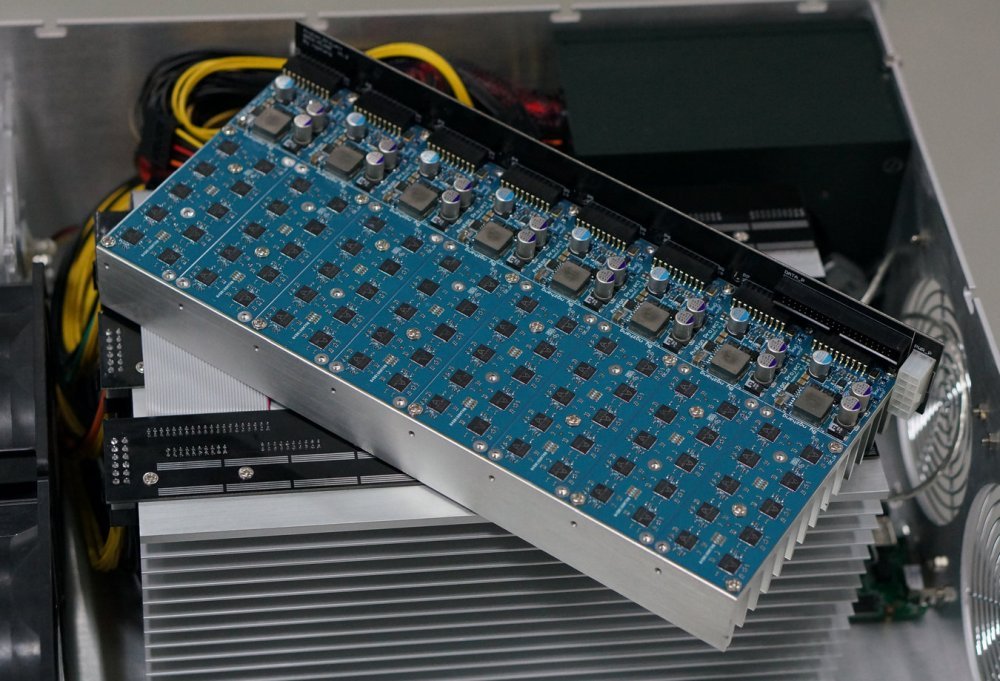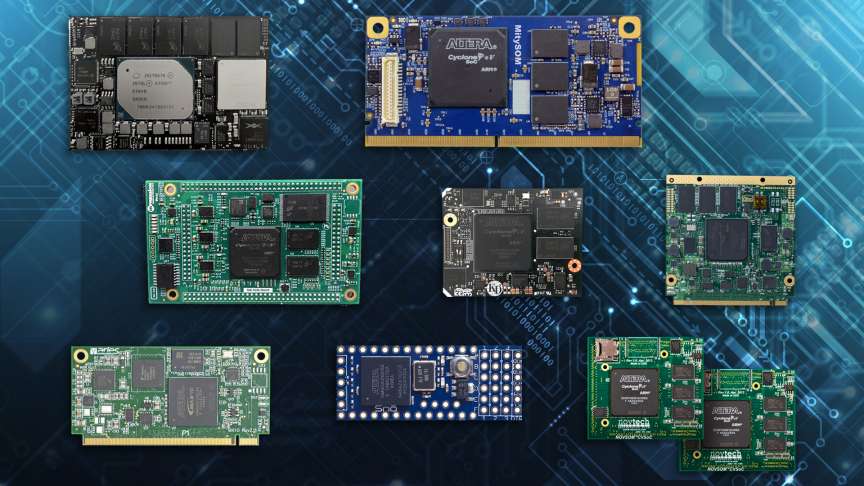Our topic is once again artificial intelligence. We have been hearing the term “AI” very frequently since 2022, perhaps we are experiencing the fastest advancing process in the history of technology. Generally, artificial intelligence-supported platforms, applications and creative solutions come to the fore. The “hardware” part behind the scenes that makes everything happen is a bit overshadowed.
From robots that perform customer service tasks to applications that create interesting images and videos, artificial intelligence is revolutionizing a variety of industries. Rather than software, which is at the forefront, today we will take a look at hardware solutions that “make artificial intelligence smart”.
When it comes to hardware artificial intelligence support, “NPU (Neural Processing Unit)” comes to mind. NPU is more aimed at the end user. On artificial intelligence servers, tremendous hardware power is needed to run the workloads we perform.
What is Artificial Intelligence (AI) Hardware?
Artificial intelligence hardware, in general terms, are special components designed to perform job-related tasks efficiently. In other words, chips and integrated circuits designed to provide fast data processing and energy-saving features. These hardware also provide the necessary infrastructure to effectively execute artificial intelligence algorithms and models.
The role of AI hardware in machine learning is crucial as it helps execute complex programs for deep learning models. Moreover, by accelerating a large number of operations compared to traditional computer hardware such as CPUs, the time and cost required for algorithm training and execution can be significantly reduced.
With the increasing popularity of artificial intelligence and machine learning models, the demand for acceleration solutions has also increased tremendously. With the developing process, companies such as NVIDIA, the world’s leading GPU manufacturer, have seen serious growth rates. With the AI craze, NVIDIA’s market value exceeded $1 trillion, ahead of names like Tesla and Meta.
As you can see, companies that produce artificial intelligence-focused hardware will have more say in the future and will add value. Now let’s take a look at the types of hardware that can work in this field.
Edge Computing Chips
Edge computing is a distributed information technology (IT) architecture in which client data is processed at the periphery of the network, as close to the originator as possible. Data is the lifeblood of modern businesses, supporting real-time control over critical business processes and operations.
There are special chips developed for this purpose. Specially designed processors are developed specifically to run artificial intelligence models at the edge of the network. Thanks to edge computing chips, users can process data and perform important analytical operations directly at the source of the data, eliminating the need to transfer data to central systems.
Applications for edge computing are diverse and extensive. It is possible to encounter it in autonomous vehicles, facial recognition systems, smart cameras, drones, portable medical devices and other real-time decision-making scenarios.
It is necessary to open a separate parenthesis for the advantages of edge computing chips. First, by processing data close to its source, it greatly reduces latency and improves the overall performance of AI ecosystems. It also maximizes the level of security by minimizing the amount of data that needs to be transmitted to the cloud. Here are some of the specialized AI hardware known in the edge computing space: Jetson Xavier NX, AMD EPYC Embedded 3000 Series, Jetson Nano, ARM Cortex-M55, and ARM Ethos-U55.
Quantum Hardware
A QPU, also known as a quantum processor, is the brain of a quantum computer, using the behavior of particles such as electrons or photons to perform certain types of calculations much faster than the processors in today’s computers.

Quantum computing is a real and advanced computing system that works based on the principles of quantum mechanics. While classical computers use bits, quantum computing uses quantum bits (qubits) to perform operations. These qubits enable quantum computing systems to process large data sets more efficiently, making them highly suitable for artificial intelligence, machine learning and deep learning models.
Quantum hardware applications have the potential to revolutionize artificial intelligence algorithms. For example, in drug discovery, quantum hardware can simulate the behavior of molecules and help researchers accurately identify new drugs. Similarly, in materials science, it can contribute to climate change predictions. The financial industry can benefit from quantum hardware by developing price prediction tools. Benefits of quantum computing to the world of artificial intelligence:
- Speed: Quantum computers are much faster than traditional computers and can solve complex problems in seconds that would take billions of years.
- Truth: Quantum computing allows AI models to be trained in a shorter time with large amounts of data, providing higher accuracy in predictions and analysis.
- innovation: Quantum computing hardware enables new developments and breakthroughs by providing previously unattainable levels of computing power.
ASIC (Application Specific Integrated Circuits)
We have talked about ASICs in detail before. ASICs are specialized semiconductor circuits designed to perform a specific function or set of functions. Unlike general-purpose processors such as CPUs and GPUs, ASICs are tailored to meet the needs of a specific application. Since it is intended for a specific job, it is specially optimized so that performance and power efficiency can be achieved. In general, circuits called ASICs are used in high-volume products where the cost of custom design can be justified with the advantages of improved performance, lower power consumption and reduced form factor.
Custom designed chips can have any logic, memory, or analog components necessary to perform the desired function. However, manufacturing an ASIC is expensive and time consuming. Also, like an FPGA, it cannot be reprogrammed or modified after production. It is much better suited for high-volume, low-variability and stable applications such as digital signal processing, graphics processing or encryption.

You may have heard of ASICs when cryptocurrency mining was popular. Its aim is to accelerate AI procedures to meet the specific needs of your business and provide an efficient infrastructure that increases the overall speed in the ecosystem. Purpose-built chips are cost-effective compared to traditional central processing units (CPUs) or graphics processing units (GPUs). This is to ensure power efficiency and superior task performance.
These integrated circuits can play an important role in training artificial intelligence models by processing significant volumes of data. It is possible to use it in various fields, including natural language processing of texts and speech data. Additionally, the installation of complex machine learning mechanisms becomes easier thanks to ASICs.
Neuromorphic Hardware
Neuromorphic hardware represents a significant advance in computer hardware technology that aims to mimic the functioning of the human brain. This innovative hardware adopts a working neural network infrastructure while being able to mimic the human nervous system. The network consists of interconnected processors called neurons.
Unlike traditional computing hardware that processes data sequentially, neuromorphic hardware excels at parallel processing. Parallel processing capability enables the network to perform multiple tasks simultaneously, increasing speed and energy efficiency.

Neuromorphic hardware has other attractive advantages. Because it can be trained on extensive datasets, it is suitable for a wide range of applications such as image detection, speech recognition and natural language processing. In addition, the accuracy rate of neuromorphic hardware is remarkable because it is possible to obtain information quickly using large amounts of data. Here are some of the most important neuromorphic computing applications:
- Autonomous vehicles utilize neuromorphic computing hardware to enhance their ability to perceive and interpret the environment.
- In medical diagnosis, neuromorphic hardware can help identify diseases by contributing to image perception capabilities.
- It can be used in various IoT (Internet of Things) devices.
FPGA (Field Programmable Gate Array)
Field Programmable Gate Array (FPGA) is an advanced integrated circuit that offers valuable advantages for the implementation of AI software. Because they are customizable and programmable, they tend to meet the specific needs of the AI ecosystem. That’s why its name is “field programmable”.
FPGAs consist of configurable logic blocks (CLBs) that are interconnected and programmable. Thanks to this inherent flexibility, a wide range of applications in the field of artificial intelligence can be enabled. Additionally, these chips can be programmed to perform operations at different levels of complexity by adapting to the specific needs of the system.

It is possible to optionally reprogram FPGAs that work like a read-only memory chip but have a higher gate capacity. Since programming can be done multiple times depending on the scenario, adjustments and scalability are enabled according to evolving requirements. In addition, the designs we call FPGAs offer a more efficient and cost-effective architecture for artificial intelligence applications than traditional computing hardware.
Why Do We Need NPU?
Let’s also talk about NPUs for end consumers. As we have stated many times, vehicles that use artificial intelligence also require workforce. There are different requirements and computing needs depending on the industry, usage area and software. With the increasing demand for productive artificial intelligence use cases, a renewed computing architecture designed specifically for artificial intelligence was needed.
Central processing unit (CPU) and graphics processing unit (GPU) aside, chips called neural processing unit (NPU) were designed from scratch for all artificial intelligence tasks. When a suitable processor is used with an NPU, new and advanced productive AI experiences can be used, maximizing the performance and efficiency of the applications used. In addition, while power consumption decreases in this process, battery life is also positively affected.
What is NPU?
In essence, an NPU is a specialized processor designed to run machine learning algorithms. Unlike traditional CPUs and GPUs, NPUs are optimized to execute complex mathematical calculations that are an integral part of artificial neural networks. Specially designed neural processors can do excellent work in processing large amounts of data in parallel. In this way, image recognition, natural language processing and other tasks related to artificial intelligence can be handled much more easily. For example, if a GPU were integrated within the GPU, the NPU could be responsible for a specific task such as object detection or image acceleration.
Designed to accelerate neural network operations and artificial intelligence tasks, the Neural Processing Unit is integrated into CPUs and SoCs rather than being separate. Unlike CPUs and GPUs, NPUs are optimized for data-driven parallel computing. Besides a multitude of tasks, it is highly efficient in processing large multimedia data such as videos and images, and data processing for neural networks. It will be especially useful in photo/video editing processes such as speech recognition, background blurring and object detection in video calls.
The NPU is also an integrated circuit, but it is different from single-function ASICs (Application Specific Integrated Circuits). While ASICs are designed for a single purpose (like bitcoin mining), NPUs can meet the diverse demands of network computing by offering greater complexity and flexibility. This is made possible through custom programming in software or hardware tailored to the unique requirements of neural network computations.
The Future of AI Hardware
With developing AI applications, the need for special systems to meet computational needs is also increasing. While the user base is constantly expanding, the amount of data processed is also increasing.
Innovations in processors, accelerators, and neuromorphic chips have begun to prioritize efficiency, speed, energy savings, and parallel computing. With the integration of AI hardware, on-device processing, lower latency and improved privacy are achieved. Quantum computing and neuromorphic engineering open the doors to human-like learning potential.
Source: www.technopat.net


